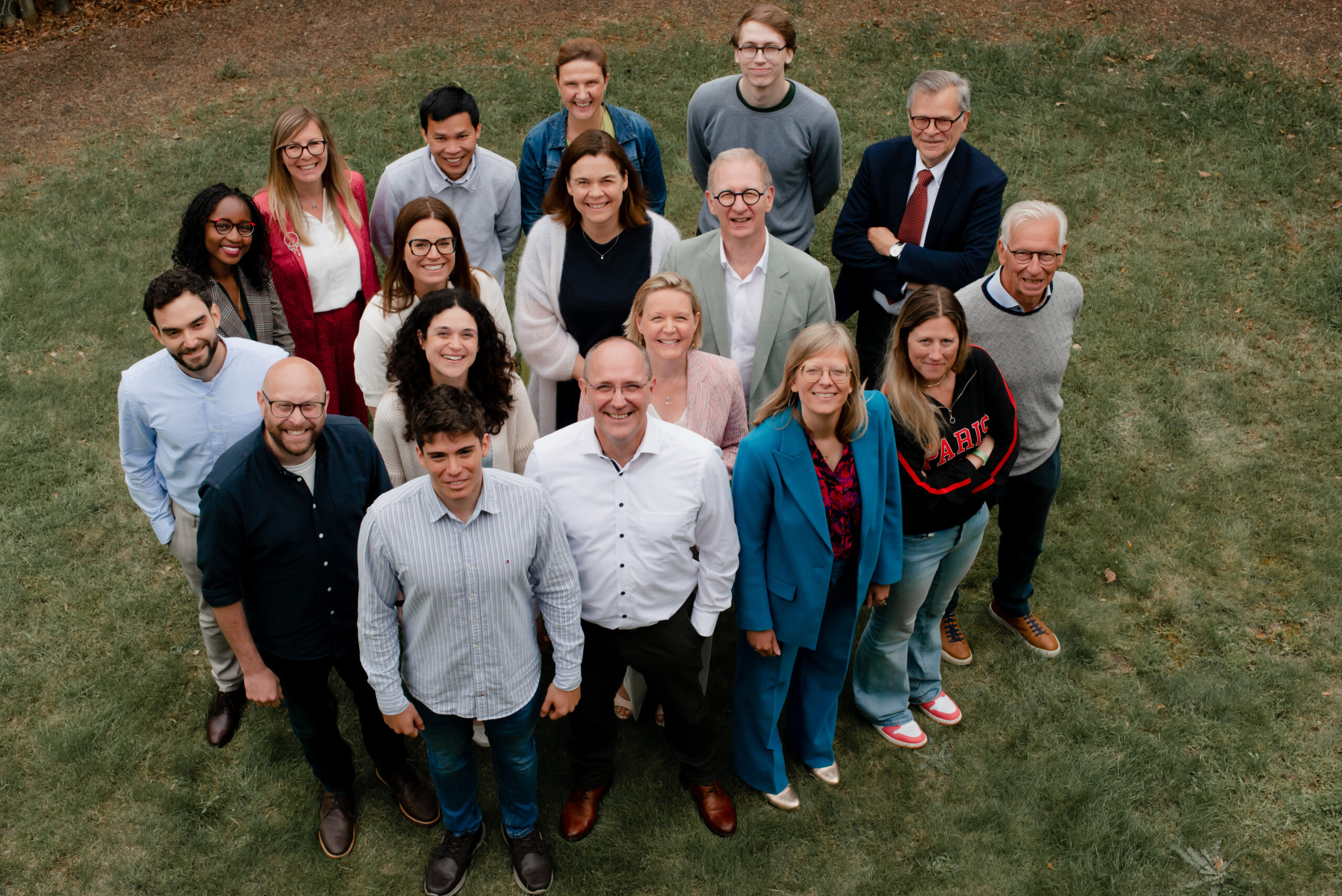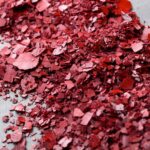REACH Restriction of chromium (VI) substances
ECHA to prepare Cr(VI) REACH restriction proposal
Hexavalent chromium compounds have been the subject of increasing regulatory scrutiny over the last decade. In the context of the REACH regulation, several chromates were added to REACH Annex XIV (The Authorisation List), with Sunset Dates of either 21 May 2015 (lead chromate, lead sulfochromate yellow and lead chromate molybdate sulfate red), 21 September 2017 (acid generated from chromium trioxide and their oligomers, ammonium dichromate, chromium trioxide, potassium dichromate, sodium chromate, sodium dichromate) or 22 January 2019 (dichromium tris(chromate), pentazinc chromate octahydroxide, potassium hydroxyoctaoxodizincateddichromate and strontium chromate).
The listed chromate substances meet the REACH Substance of Very High Concern (SVHC) criteria as all are classified as being carcinogenic with several also classified as mutagenic and/or toxic for reproduction.
The number of applications for authorisation received by ECHA for these chromates has significantly surpassed expectations. Indeed, out of all 518 uses of SVHC’s identified in authorisation reports (as of 18 September 2023), 273 (53%) were for hexavalent chromium compounds. The trend has also continued more recently for authorisation review reports, with 27 of the 37 uses submitted to date again covering hexavalent chromium compounds.
As well as scores of downstream user applications for authorisation, the authorisation of chromates has also had significant input from large upstream consortia with this including (but not limited to) the Chromium Trioxide Authorisation Consortium (CTAC) (also widely referred to as the Chemservice application), the Chromium VI Compounds for Surface Treatment (CCST) consortium and the Global Chromates Consortium for Aerospace (GCCA) consortium.
The authorisation of chromates and presence of multiple large scale upstream applications has been fraught with legal, technical and administrative challenges in recent years.
It is in this context that on 11 October 2023, ECHA announced receipt of a mandate from the European Commission to prepare an Annex XV restriction report for chromium trioxide and chromic acid (entries 16 and 17 of Annex XIV, the REACH Authorisation list). The final scope of the restriction may also be extended to include additional Cr(VI) substances.
Preparations for the Annex XV dossier have already commenced, with ECHA launching a call for evidence on 13 December 2023 to gather information on the affected industries to potential binding Scientific Limit Values for Cr(VI) exposure as well as emissions to air and water. Wider input relevant for the preparation of the Annex XV dossier is also sought from other interested parties, including industry associations, Member State authorities and NGOs.
The announcement of restriction preparations raises several important questions for stakeholders, and particularly for companies who have been engaged in the chromates REACH Authorisation process in recent years.
Apeiron-Team’s experts delve into the background, reasoning and key materials surrounding this announcement, and explain the importance of responding to the current call for evidence and preparing for the next steps.
As such, this article is structured as follows:
– The background of the restriction proposal is discussed
– The next steps of the restriction proposal & ongoing legal uncertainty
– Advice for industry stakeholders
– How Apeiron is best suited to assist you
Restriction – why now?
In April 2023, in Case C-144/21, the European Court of Justice delivered a ruling partially annulling Commission Decision C(2020)8797, the aforementioned ‘Chemservice’ or ‘CTAC’ decision.
This upstream authorisation covered multiple uses of chromium trioxide and activities at over 1000 sites in the EU, with the ruling applicable to the following uses:
- Use 1: Formulation of mixtures (as far as it relates to the formulation of chromium trioxide into mixtures for uses 2, 4 and 5)
- Use 2: Functional chrome plating
- Use 4: Surface treatment for applications in the aeronautics and aerospace industries (unrelated to functional chrome plating or functional chrome plating with decorative character)
- Use 5: Surface treatment for applications in various industry sectors, namely architectural, automotive, metal manufacturing and finishing, and general engineering (unrelated to functional chrome plating or functional chrome plating with decorative character).
Stemming from the partial annulment, it was widely expected that huge numbers of new applications for authorisation would be submitted, significantly compounding procedural delays which have persisted within ECHA and the European Commission in recent years, due to an already stretched workload.
Recognising these issues, the Commission’s mandate to prepare a restriction highlights that:
“The number of applications for authorisation for the use of Cr(VI) substances has far exceeded the predictions at a time of inclusion of the substances in Annex XIV, and the current workload relating to these applications goes significantly beyond the annual capacity of RAC & SEAC. This is causing severe delays in the opinion-making by those committees and in the decision-making by the Commission”
The mandate adds that these delays are undermining one the objectives of the REACH regulation (the protection of human health and the environment) as well as the aim of the authorisation process to progressively replace SVHCs. ECHA and the Commission’s efforts to address risks from other hazardous substances within the EU are also being detrimentally affected.
With these aspects in mind, the current regulatory approach has been described as “no longer appropriate”.
Why Restriction?
As a key mechanism of REACH, restrictions are ‘any condition’ on the manufacture, placing on the market or use of a substance or mixture to address an ‘unacceptable’ risk. Whilst restrictions are sometimes used to ban specific substances or uses, they can also implement a variety of additional measures.
For example, a restriction can require certain technical measures to be used or even specify the DNEL that must be used in registration dossiers. A restriction can include temporary or permanent derogations for certain uses where a ban would be disproportionate (e.g., where there are no suitable alternatives for the specific use alongside large negative impacts for society, such as the availability of medicines). The conditions of a restriction are binding on all actors in the EEA; no local deviations are foreseen.
In the current case, a REACH restriction may be seen as a long-term solution to the regulatory uncertainty that has surrounded Cr(VI) for many years.
What are the implications for stakeholders engaged in the authorisation process?
Alongside the request for ECHA to prepare a restriction, the European Commission has published a Q&A further delving into the restriction of Cr(VI) substances under REACH. The Q&A also explores consequences associated with the European Court of Justice judgment in Case C-144/21.
On the restriction, the Q&A makes clear that should this progress, procedurally, two acts would need be simultaneously undertaken by the Commission:
- Annex XIV of REACH would need to be amended to completely ‘de-list’ the relevant substances Cr(VI) substances; REACH authorisation would no longer apply (with no uses remaining covered); and
- Annex XVII would need to be amended, introducing the restriction, replacing the REACH authorisation requirement with an obligation for manufacturers and users of the relevant Cr(VI) substances to comply with the conditions of the restriction if they wish to continue to use them.
In a best-case scenario, the Commission envisages adoption of a restriction approximately three years from now, equating to the end of Q3 2026. Publication of the restriction proposal will come much sooner, with ECHA expected to submit this for scrutiny by ECHA’s scientific committees for risk (RAC) and socio-economic analysis (SEAC) by 4 October 2024.
On already granted authorisations, the Q&A notes that the available information will be used by ECHA to prepare the restriction proposal, but the restriction may include derogations with specific transitional periods for different uses. Importantly, the scope and timing of derogations may not necessarily align with granted authorisations.
The Q&A also clarifies that, in the interim, the REACH authorisation obligation will remain in place until the relevant substances are removed from Annex XIV (i.e. existing decisions will remain valid, pending decisions will continue to be processed and the standard authorisation rules and procedures will apply).
Whilst the interim ‘business as usual’ status of authorisation is clear, these announcements do not alleviate several uncertainties stemming from Case C-144/21.
For downstream users covered by uses 1, 2, 4 and 5 of the annulled Chemservice authorisation, the Q&A provides some important clarifications:
- The effects of the annulled decision will be maintained for a maximum of one year from the judgment (i.e. until 20 April 2024).
- As a result of the annulment, the Commission will need to prepare a new draft decision, considering the court’s findings.
- After April 2024, downstream users covered by the annulled decision would benefit from transitional arrangements, at least until a new decision is made on the initial application.
- This means that downstream users currently covered by the annulled decision can continue to use Cr(VI) substances (in accordance with adherence to the use and operational conditions set out in the application).
Outside the scope of these uses, there also remains the question of what are the next steps for the Chemservice application use 3 (functional chrome plating with decorative character), particularly given that the decision for this application for authorisation remains pending and has been complicated by a retrospective requirement to submit a substitution plan (stemming from EU General Court Judgment in case T-837/16).
Q8 of the Q&A relates specifically to this topic, highlighting that:
- The Commission has not yet taken a decision;
- The submitted substitution plan was concluded by SEAC to be non-credible;
- Until a decision is taken on the application, all downstream users covered by the Chemservice use 3 application can continue to use chromium trioxide due to the benefit of transitional arrangements.
In light of the above, questions for stakeholders currently benefitting from transitional arrangements for the application will remain – particularly in terms of the potential timing and outcome of the Commission decision. For example, should a negative authorisation decision enter into force prior to a restriction, associated uses would need to cease – even if they fell outside the scope of the proposed restriction. This raises the question of whether new applications for authorisation will need to be submitted by potentially affected stakeholders.
With great experience devising authorisation strategies and drafting convincing authorisation applications, Apeiron-Team can help to guide you through these complex regulatory challenges.
Aside from the Chemservice application, in terms of the implications of the judgment on other pending applications for authorisation the Q&A provides little further clarity, with the Commission noting that it is “assessing the pending applications for authorisation to analyse whether any of them is affected by the judgment and is identifying the way forward for those considered affected”.
What are the next steps for the restriction?
The REACH restrictions process is typically split into three phases; the first concerns the preparation and submission of the restriction proposal by a Dossier Submitter (in this case ECHA), the second relates to the formal consultation and the development of opinions by ECHA’s RAC and SEAC. The third relates to the subsequent Commission decision as well as compliance and enforceability aspects.
The restriction of Cr(VI) substances currently sits in the ‘preparation and submission phase’, with this including ECHA’s call for evidence launched on 13 December 2023. The call for evidence in not a compulsory part of the restriction process, and is separate from the mandatory consultations in the second phase of the restriction, which will include a six-month consultation on the Annex XV restriction report and a 60-day consultation on the draft SEAC opinion. However, the call for evidence already provides some indications as to the type of restriction that may be implemented, with this noting that possible restriction options may consider the implementation of an 8h time weighted average (TWA) reference value for worker exposure, with exposure levels currently being considered at either 5 μg/m3, 1 μg/m3, 0.5 μg/m3, 0.1 μg/m3 or 0.01 μg/m3. These binding Scientific Limit Values may differ from use to use, depending on the typical abatement cost to reduce exposure and emissions or on the maturity of potential alternatives. As such, the binding Scientific Limit Values become a driver for substitution or for exposure/emission reduction.
Based on the information available, an initial timeline for the chromates restriction can already be defined
ECHA expects to submit the restriction dossier (Annex XV report) 4 October 2024. Based on this date and the ‘standard’ timelines for restriction opinion-making foreseen in the REACH regulation, estimated timings for several key stages of the proposal can be provided, as indicated below.
Ongoing legal uncertainty
Where a granted authorisation provided a license to operate until the end of the review period (= authorised period), this has now become uncertain with the European Commission’s U-turn in its approach to regulate the use of hexavalent chromium. Because the restriction will be adopted simultaneously with a ‘de-listing’ from the authorisation list (Annex XIV of REACH), the conditions set in authorisation decisions will no longer apply and users will, instead, have to comply with the restriction conditions as of its entry into force. The timing of the entry into force is expected end 2026. However, decision-making on the restriction proposal is as uncertain as the ongoing decision-making on upstream Cr(VI) applications for authorisation. There is thus no guarantee that the restriction will be voted and will replace authorisation in the end.
The inability to decide upon several applications for authorisation for the continued use of Cr(VI), in particular the upstream applications and the applications for the use of functional decorative plating, has led to legal uncertainty for the Cr(VI) industry in Europe. The European Commission intends to solve this deadlock and to create the highly necessary legal certainty by implementing a restriction, rather than continuing the authorisation process. However, the legal certainty will only exist either when the restriction proposal comes into force, or when the pending authorisation applications receive an EUCOM decision.
In summary, the following scenarios exists:
- Those Cr(VI) users that were granted an authorisation have legal certainty of business continuity, at least until the restriction comes into force.
- Those Cr(VI) users that are covered by an upstream application that was submitted before the latest application date, benefit from the transitional arrangement and thus, they can continue their use, at least until an EUCOM decision is made or until the restriction comes into force. If, however there is a negative opinion by RAC & SEAC, then EUCOM can refuse the authorisation at any time (cfr. upstream authorisation application for MOCA in polyurethane production). This risk could exist for functional decorative plating (CTAC, Use 3).
- Several Cr(VI) users covered by an upstream application (that was submitted before the latest application date) have also submitted their own application for authorisation. The latter is often still in the EUCOM decision-making process. If the upstream application would be refused, then the downstream user has at least done its due diligence and can discuss business continuation with local enforcement.
- Those Cr(VI) users that are not covered by an upstream application and that have not submitted their own application for authorisation are in breach with REACH and are subject to enforcement actions (immediate production shutdown and penalties).
Thus, in the current situation, the only means to maximize the legal certainty of business continuity is an application for authorisation. This demonstrates the company’s best endeavours to comply with their legal obligations. In the meantime, it is key to get involved in the restriction process to allow a realistic restriction and thus, better regulation for human health & environment and industry.
Advice for industry stakeholders
Given the uncertainties raised, Apeiron-Team recommends industry stakeholders consider the following actions:
- Act now! It is it is critical to engage with these evolving regulatory processes as early and constructively as possible.
- Ensure your license to operate by increasing legal certainty as much as possible.
– If you’re not covered by a current authorisation application or if it received a negative opinion by RAC/SEAC, consider applying authorisation.
– If you consider applying for authorisation, you may wish to apply as part of a group of companies covering the same use(s). - Encourage the development of a realistic restriction by providing realistic input.
– Contribute to ECHA’s initial call for evidence with the requested information, and use the additional free text fields to provide relevant inputs.
– Closely monitor developments and provide detailed and substantiated information to additional forthcoming consultations. - An ongoing worker exposure and environmental emissions monitoring program is a must. Ensure that this is fit-for-purpose.
- Strive for continuous improvement regarding Cr(VI) exposure and emissions (engineering improvements).
- Continue to assess potential safer alternatives.
- Define your ongoing business strategy surrounding Cr(VI) compounds.
- Follow Apeiron-Team for more information on the ongoing processes and contact our experts to discuss any support that you require, in relation to the actions above and beyond.
Choose Apeiron-Team as your partner
Having been at the forefront of the REACH Authorisation and Restriction procedures since their inception, Apeiron-Team is adept in guiding industry stakeholders through all aspects of the processes, preparing robust reports and ensuring key messages are understood by the evaluating authorities.
We can provide full support in developing your strategy and your response to ECHA’s initial call for evidence as well as planning and implementing a broader restriction response strategy with the aim to ensure a restriction is developed which realistic, proportional, and beneficial for industry.
We can also help you address any concerns surrounding the ongoing authorisation coverage, with a full suite of strategic and authorisation dossier development services.
Contact our experts
Apeiron-Team’s experts are here to guide you through the complex regulatory situation surrounding Cr(VI) substances for seamless compliance. Reach out to info@apeiron-team.eu or +32(0)3 808 2067.








Like the sound of Apeiron?
We'd love to know more about you! We are always looking for people who are driven by passion.



